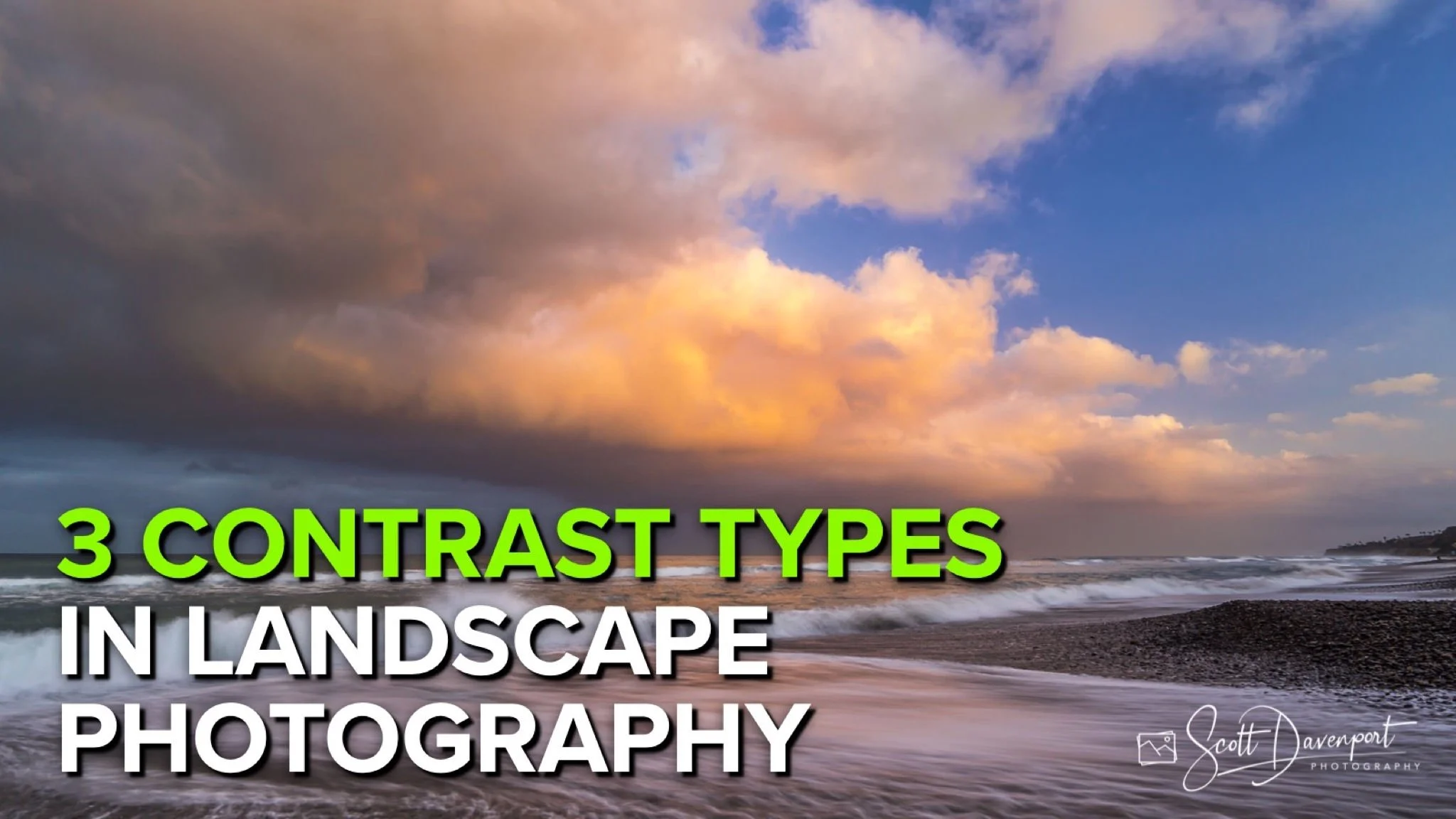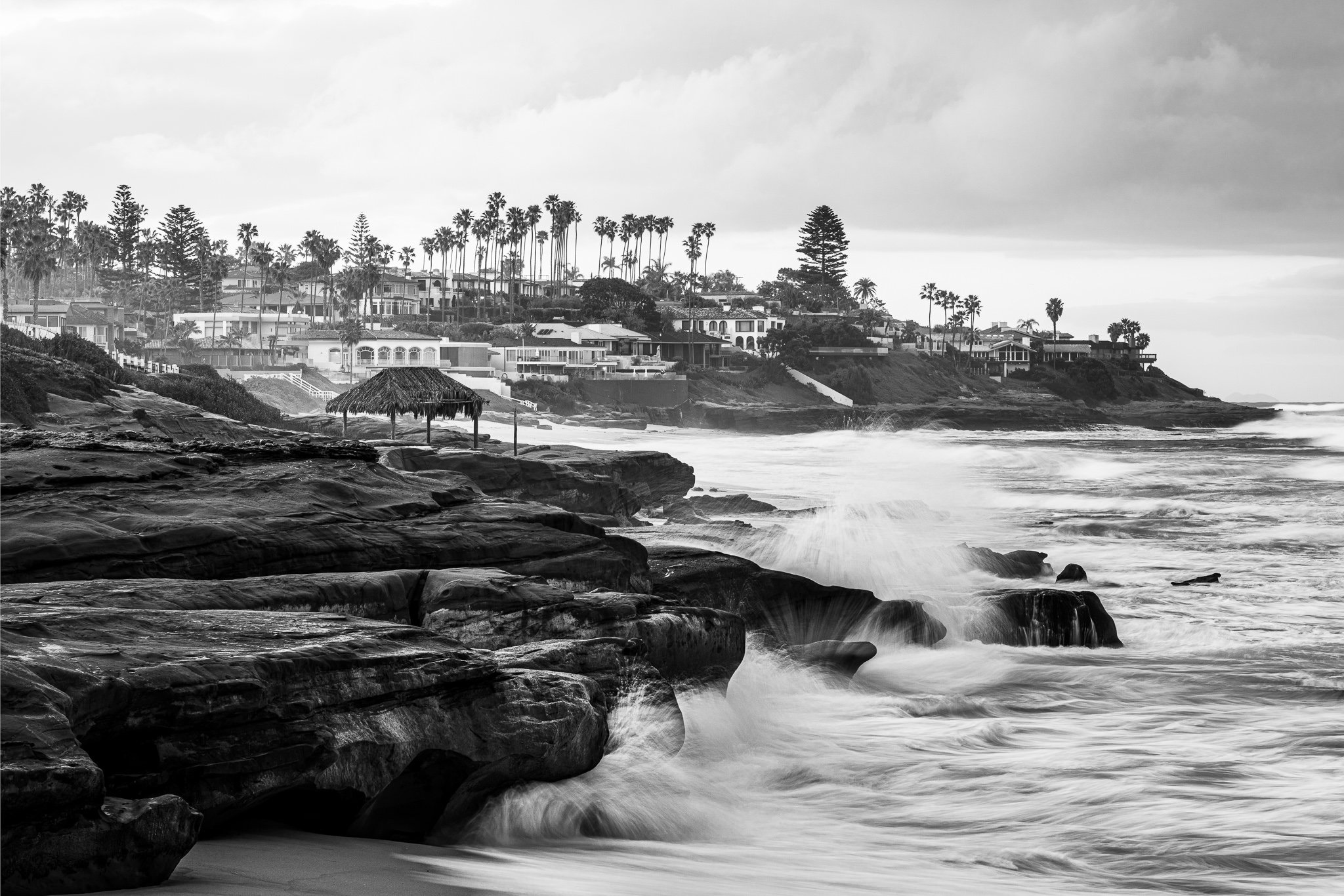3 Essential Types Of Contrast In Landscape Photos
If you enjoy posts like this, please support my work and support independent photography tutorials like this.
In landscape photography, the use of contrast is a powerful tool to enhance visual interest and convey a sense of depth. Understanding and utilizing different types of contrast, from capture through editing, will help you craft compelling and evocative imagery. In this article, let’s explore the 3 essential types of contrast you need to consider tp create visually striking landscape photos.
Light & Shadow
Light and shadow contrast creates dramatic effects by emphasizing shapes, lines, and contours. Juxtaposing bright and dark areas adds depth and dimension - a critical component of a landscape photo. Let’s look at a few examples:
In this black and white photo from Tunnel View in Yosemite National Park, the bright fog lingering among the evergreen trees in the valley adds visual interest, and also separates the forested area into segments. Also notice the lines created by the sun entering the valley from camera right. The rock on the right is pushed forward. Similarly, the middle-gray ridge in the mid ground stands apart from the more brightly lit background peaks. The layers of light and shadow add depth.
Light and shadow is equally important in color images. In this photo of Zabriskie Point in Death Valley, that same layering of light and shadow creates depth. Also notice the smaller ridges of shadow in Manly Beacon (the peak on the right). The shadows create diagonal lines complimentary to the peak, and angle inward into the frame.
Morning At Tunnel View
Contact Scott to commission a print or license this image.
Manly Beacon Zabriskie Point At Sunrise
Contact Scott to commission a print or license this image.
Silhouetted subjects are another example of leveraging light and shadow in landscape photos. The amber sunbeams cutting through a cypress grove in Point Lobos State Reserve provide a sharp contrast to the dark, silhouetted trees. This image is all about the sunbeams, so editing the photo in a way keeps the trees shadowed puts attention on the diagonal beams of light.
Sunbeams And Cypress Trees, Point Lobos, Carmel, California
Contact Scott to commission a print or license this image.
Color Contrast
Color contrast can highlight focal points and add emotional depth to the scene. Vibrant colors garner attention in landscape photos. So do natural complimentary colors and certain monochromatic scenes. If you haven’t already, learn the basics of the color wheel to quickly recognize primary, complimentary, and analogous colors. Let’s look at a few examples.
The sunrise photo at Torrey Pines Beach just north of San Diego has a natural warm/cool palette. The clouds catching the yellow and oranges of the rising sun (off camera right) are complimentary to the blues of the sky.
Primary colors dominate the photo of the Heceta Head Lighthouse. The blue shy and green grass and forest form a calm, pleasing color palette. The blues and greens are also analogous colors. The splashes of red introduce the third primary color and create a visual break in the scene.
Sunirse At Torrey Pines
Contact Scott to commission a print or license this image.
Heceta Head Lighthouse
Contact Scott to commission a print or license this image.
This image of the Virgin River in Zion National Park employs a more subtle use of color contrast. Pay attention the valley floor. The valley floor is primary warm tones. There are the brown grasses of winter and the sandy banks of the river. The trees that dot the valley floor have a cooler, almost blue-ish tone. This color contrast was lightly boosted in post-processing. The trees are cooled slightly to offset them from the valley floor, emphasizing the gentle S-curve of the valley floor into the distance.
Virgin River Valley, Zion National Park
Contact Scott to commission a print or license this image.
Texture Contrast
Lastly, the contrast between texture and smoothness introduces tactile variation, enriching the photograph with a sensory complexity. Some elements in the landscape are rough, hard, or sturdy. Others are soft, fluid, or flowing. Juxtapose these elements in your frame and your compositions for for engaging photos.
The photo of the remnants of a pier (or boat mooring) against the still water of San Diego Harbor is an extreme example. The wooden pilings are crisp and textured and jump out against the soft, uniform water and foggy background. Your viewer will almost immediately latch on to the wooden structure, as the human brain processes large areas of uniformity quickly and (often) without second thought.
The rushing water around the stones on Shell Beach in La Jolla, California are soft and smooth - almost billowy. They are a stark contrast to the detailed and crisp stones and the grains of sand on the beach. This image also has light & shadow contrast, too, both in the ocean and in the sky. Notice how the clouds get more depth because of the ridges of light and shadow in them.
Foggy Harbor
Contact Scott to commission a print or license this image.
Shell Beach
Contact Scott to commission a print or license this image.
Texture contrast is often found in cityscapes, too. In the photo below of Castel Sant’Angelo in Rome, the stonework of the bridge and castle are detailed and crisp. They become diffused in the reflection of the river, and offset by the negative space of the empty sky. This photo also has color contrast. The warm amber cast of the artificial lighting compliments the cool blues of the sky.
The Castel Sant'Angelo At Dawn
Contact Scott to commission a print or license this image.
Conclusion
Light & shadow, color, and texture contrast are important elements in a landscape photos. Not every photo will have all three types, though many of your images will have more than one. Whether your photo as one type or all three, each type of contrast contributes uniquely to the overall impact of your landscape photos. Practice seeing and using these types of contrast in your images, and you’ll be able to effectively incorporate contrast into your photography.
Have fun!










